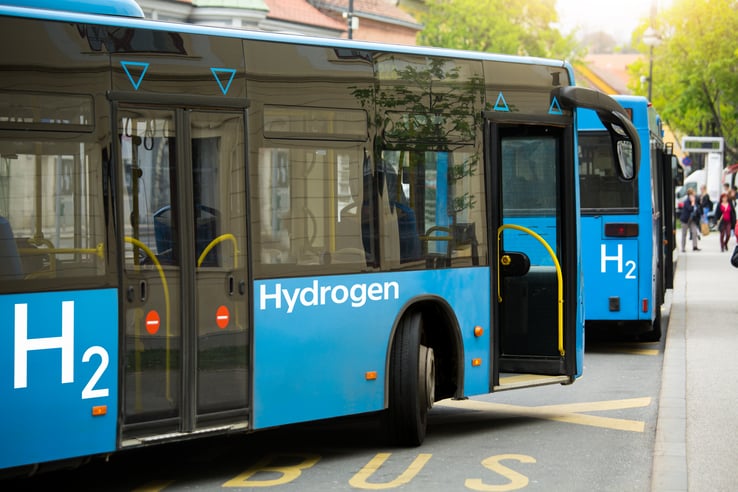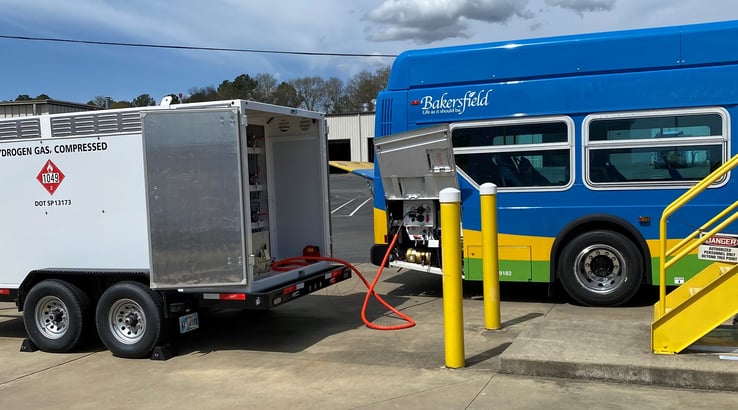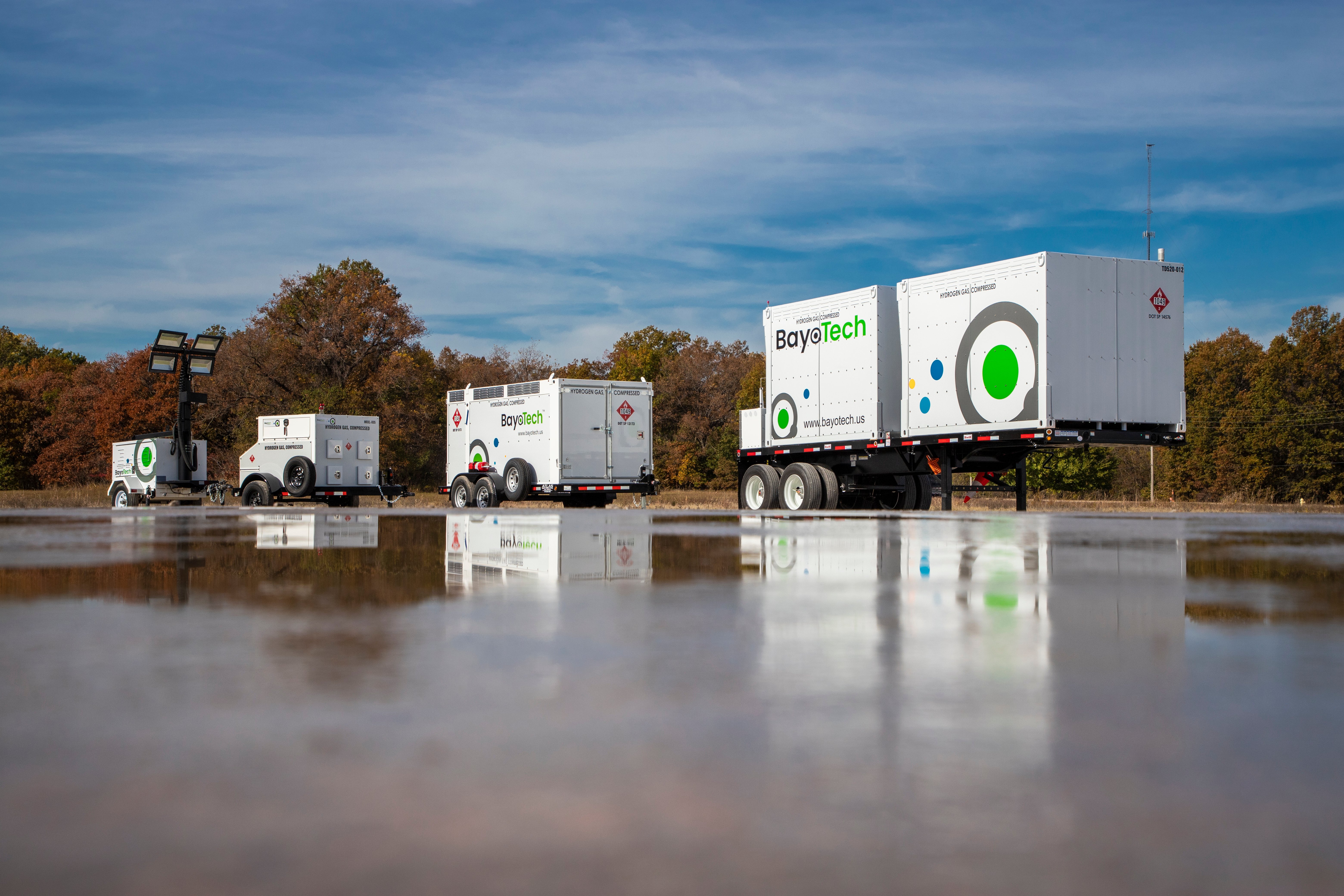All around the world, transit bus operators are under pressure to transition to zero-emission fleets. The United States just saw the single most significant investment in public transit history with the passing of the Bipartisan Infrastructure Law. The Government of Canada created a $2.75 billion Zero Emission Transit Fund to support the shift towards green transportation. It’s not only governments that are driving the switch from fossil fuels. The California Transit Association, for example, has the goal of a fully zero-emission fleet by 2040. This is a global movement.
Transit operators are at a crossroads. Namely, how can they transition their fleet in a cost-effective, efficient, and sustainable way? In this blog, we’ll look into the differences between the two zero-emission technologies (hydrogen and battery-electric) and the importance of choosing a solution that can scale with your operations.
How Your Transit Operations Will Benefit With Hydrogen
Transit operators have two zero-emission options: hydrogen fuel cells and battery electric. To get straight to the point, hydrogen fuel cell electric buses (FCEBs) are the only alternative that offers zero compromises in vehicle performance. Though battery electric vehicles excel in short-range travel and temperate climates, only FCEBs perform in all weather conditions, refuel quickly, and are built for long hauls. (FCEBs can travel over 275 miles with only one 10-minute refueling).
We don’t see more FCEBs on the road today because many transit operators believe setting up the hydrogen refueling infrastructure is cost-prohibitive and complicated. There can also be concerns that hydrogen is not truly a clean energy source.
Two early hurdles make hydrogen seem intimidating. First is the complexity of installing hydrogen fueling infrastructure. When the first FCEBs are introduced to your fleet, your transit agency must know how and where the vehicles will be refueled. It’s a lot to consider. Especially compared to electric buses, which simply plug into the grid. But as your fleet grows, electric buses become more complicated. Are there enough chargers? Do you have enough electricity? Will you need an expensive new substation and how many years before your electric utility could build it? Meanwhile, the infrastructure built early on for FCEBs remains reliable at scale.
The second hurdle is the perception that the initial cost of hydrogen fueling infrastructure is significantly higher than setting up charging stations for a small number of battery-electric buses. However, as the FCEB fleet grows, the cost of fueling infrastructure per bus drops dramatically, and the cost of hydrogen refueling becomes cheaper than electric charging as the fleets grow.

Clean Emissions and Carbon Intensity
All battery electric and hydrogen vehicles are zero-emission at the tailpipe and significantly cleaner than diesel. No NOx, SOx, particulate matter, or carbon dioxide tailpipe emissions. Water and heat are the only byproducts from the fuel cell.
To consider the total emissions from either a battery electric bus or fuel cell bus, we need to look upstream at the source of energy. For instance, depending on the region, the grid electricity charging the batteries could be generated from coal, natural gas or renewable energy sources—all with varying levels of emissions.
The production and delivery of hydrogen determines the total emissions for FCEBs. It depends on several factors such as energy consumption, transportation, liquefaction, and feedstock source. In every case, hydrogen is a minimum of 40% reduction in carbon dioxide emissions over diesel. There are pathways to drive this down even further and generate carbon neutral or even carbon-negative hydrogen. One option is electrolysis entirely powered by renewable energy sources. This is a very energy-intensive process and expensive today. A nearer term solution is to produce hydrogen from renewable natural gas (RNG) sourced from agricultural, municipal waste, and other biogenic sources. The blended use of RNG in a distributed SMR system provides an economical and extremely effective pathway for reducing or entirely avoiding carbon emissions.
At the end of the day, hydrogen is substantially cleaner than diesel and plays an essential role in decarbonizing transit.

How BayoTech Helps Transition to Hydrogen
There’s no reason why your transit agency must immediately invest in infrastructure. BayoTech offers high-pressure hydrogen in compact trailers that refuel your buses directly from the trailer, and our distributed hydrogen hubs mean that there’s a reliable source of hydrogen when you need it. These solutions allow agencies to test a couple of hydrogen buses or run a small pilot program without refitting their current infrastructure—allowing them to experience the benefits of FCEBs without the cost. Check out how we helped Champagne-Urbana Mass Transit District to see our solutions in action.
Our high-pressure hydrogen also scales with you. What may start as trailer delivery for a few buses can turn into onsite storage for your fleet. And when you’re ready to make the leap and begin building hydrogen infrastructure, we can help with that too.
Another way to reduce the cost of getting started with hydrogen is to take advantage of the funding offered by local and federal governments. As we mentioned earlier, the Government of Canada is investing billions of dollars into zero-emission transit—and many other governments have similar initiatives. The American Low or No Emission Program provides over a billion dollars in funding “the purchase or lease of zero-emission and low-emission transit buses as well as acquisition, construction, and leasing of required supporting facilities.” Knowing how to receive this funding can make the start-up costs much more affordable.
.png?width=738&height=332&name=BayoTech_ACT%20Fueling%20with%20GTM%20(1).png)
Closing Thoughts
Adding FCEBs to your transit fleet is a significant step towards a zero-emission future. They provide an unbeatable combination of long-range performance, all-weather capability, and fast fueling. The only roadblock in the way of a hydrogen future is the infrastructure cost. Our solutions minimize the upfront expense, allowing your transit agency to decide whether FCEBs are the right choice for your needs. And as your fleet expands and your needs change, we grow with you.




